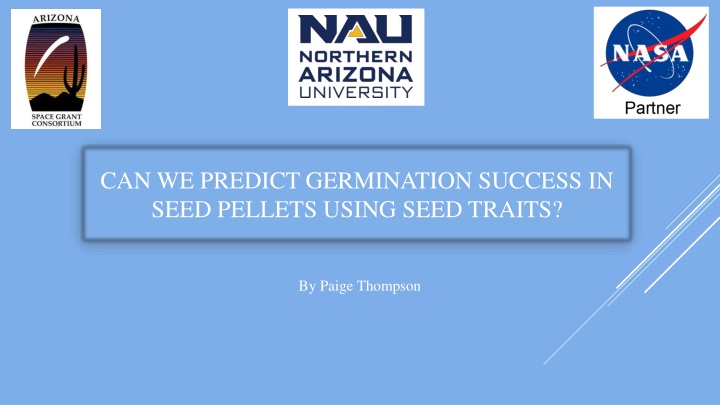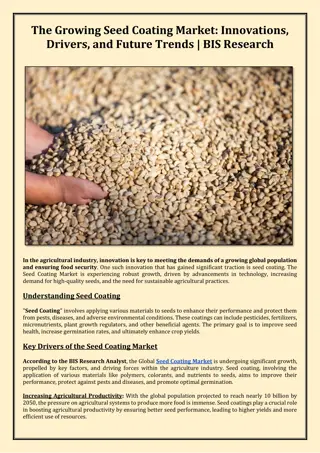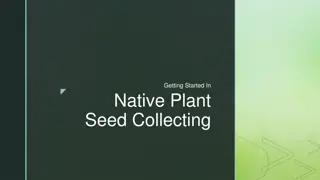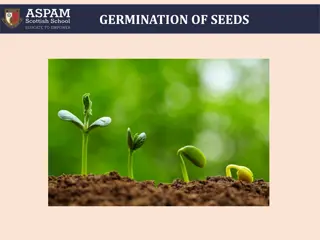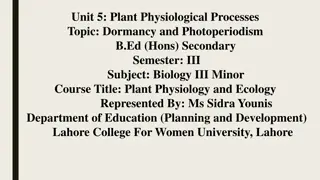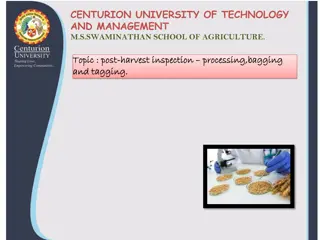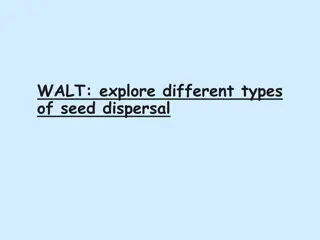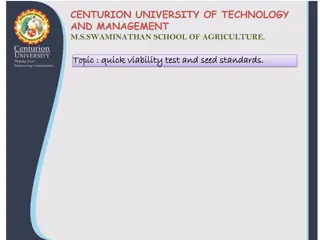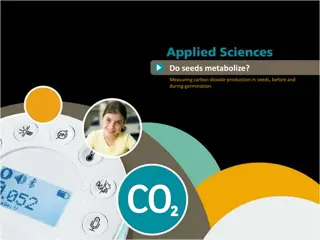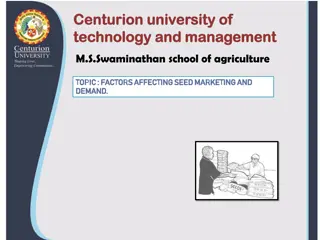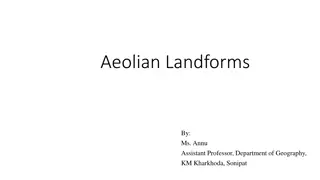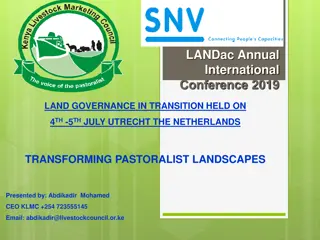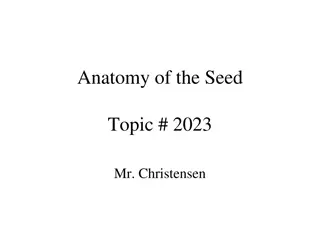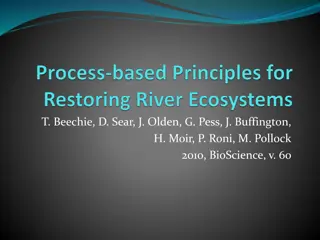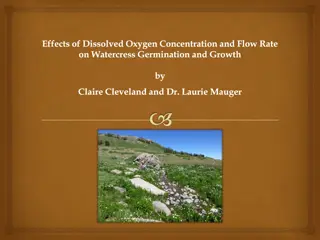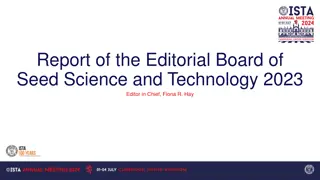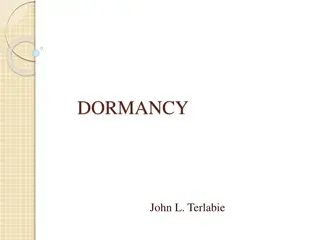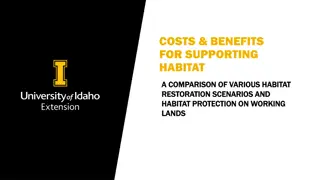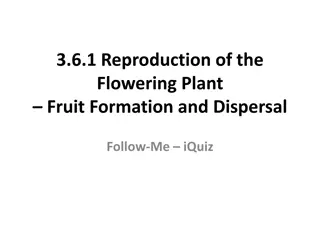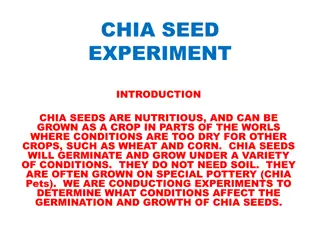Enhancing Restoration Success with Seed Pellets: A Study on Predicting Germination in Arid Environments
Ecological restoration in arid lands often faces challenges with seeding projects. This study explores using seed pellets to predict germination success by matching seed traits with pellet characteristics. The hypotheses focus on seed size and species comparison to improve restoration practices.
Uploaded on Sep 15, 2024 | 0 Views
Download Presentation

Please find below an Image/Link to download the presentation.
The content on the website is provided AS IS for your information and personal use only. It may not be sold, licensed, or shared on other websites without obtaining consent from the author.If you encounter any issues during the download, it is possible that the publisher has removed the file from their server.
You are allowed to download the files provided on this website for personal or commercial use, subject to the condition that they are used lawfully. All files are the property of their respective owners.
The content on the website is provided AS IS for your information and personal use only. It may not be sold, licensed, or shared on other websites without obtaining consent from the author.
E N D
Presentation Transcript
CAN WE PREDICT GERMINATION SUCCESS IN SEED PELLETS USING SEED TRAITS? By Paige Thompson
RESTORATION AND WHY ITS IMPORTANT Ecological restoration: the process of assisting the recovery of an ecosystem that has been degraded, damaged, or destroyed Restoration projects often seed native species and despite financial and logistical investments, many of these seeding projects fail in arid lands (Gornish, Arnold, and Fehmi 2019) Plant traits are defined as morphological, physiological or phenological features of individual plants (Violle et al. 2007) Provide insight into how plants are adapted to current and future climate conditions Understanding how plant traits can improve restoration practices is important to preserving and restoring the southwest
WHAT ARE SEED PELLETS Native Seed Balls - Earthroots Field School Product Range of Seed Bomb Seeds are coated by a protective layer clay, soil, and/or compost Provide protection from predation Gives additional nutrients that can aid in germination and seedling establishment Has roots in ancient times (Schreiber, 2014) & is becoming more popular in modern times
SEED PELLETS Arid environments face many challenges Irregular precipitation, seed predators, harsh surface conditions, native seeds poorly suited to mechanical distribution Seed pellets can combat these issues There is not a lot of quantitative data on pellets These pellets contain: floated red clay, coconut husk, compost, and vermiculite Seed pellet goals: enhanced germination and establishment, protect from predators, & improved distribution
HYPOTHESES & GOAL Hypothesis one: Smaller seeds will have higher germination rates in smaller pellets, while larger seeds will have higher germination in larger pellets Hypothesis two: Based on seed characteristics, the Mexican Poppy species will do better than the Blue Flax The goal is to figure out how to match seed characteristics with pellet characteristics to achieve higher restoration success rates
SPECIES Linum lewisii "Blue Flax" - Buy Online at Annie's Annuals Species selected: Argemone mexicana & Linum lewisii Common names: Mexican Poppy & Blue Flax Good for restoration: drought tolerant, common Importance: pollinators Mexican Gold Poppies | Poppies, Plants, Flora
METHODS STEPS Weighed all seeds 20 bags total, 10 bags of 100 seeds for each species for the bare seeds 20 bags total, 10 bags of 100 seeds per species for the seed pellets Bare seeds were placed on damp paper towels on growing racks & monitored Seed pellets were constructed in 2 sizes (1/4 inch and 1 inch) with 5 seeds per pellet Both bare and coated seeds were kept continuously moist Data was collected
BARE SEEDS Studies found 5% germination success rate in restoration without coatings/protective layer Seeding with bare seeds is a common restoration practice for arid environments In arid environments seeds tend to have less nutrients stored & need water as soon as possible
RESULTS Over the course of 5 weeks: 14.1% of bare seeds for Mexican Poppy germinated 51.7% of bare seeds for Blue Flax germinated Slower to start germinating Over 5 weeks: 4.5% germination for Blue Flax pellets 0% germination for Mexican Poppy pellets Mexican Poppy seeds: 0.246 g - weight mass heavier, rounder and rough texture Blue Flax seeds: 0.140 g - weight mass lower, oval-like and smooth texture
CONCLUSION The Mexican Poppy seeds had a low germination success rate Blue Flax seeds had a little over 50% germination success rate Germination in pellets were lower than expected Blue Flax showed germination Hypothesized the Mexican Poppy would do better based on initial response Blue Flax pellets showed the most growth For restoration smaller pellets should be considered Environment conditions play an important role Water breaks down the smaller pellets a lot faster than the larger ones Do want breakdown, however too quick breakdown is bad
REFERENCES Gornish, Elise, Hannah Arnold, and Jeffrey Fehmi. "Review of seed pelletizing strategies for arid land restoration." Restoration Ecology 27.6 (2019): 1206-1211. Schreiber, Andrew. Making Seedballs: An Ancient Method of No-till Agriculture. The Permaculture Research Institute, 11 Dec. 2016. Violle, Cyrille, et al. "Let the concept of trait be functional!." Oikos 116.5 (2007): 882-892.
ACKNOWLEDGMENTS & QUESTIONS
